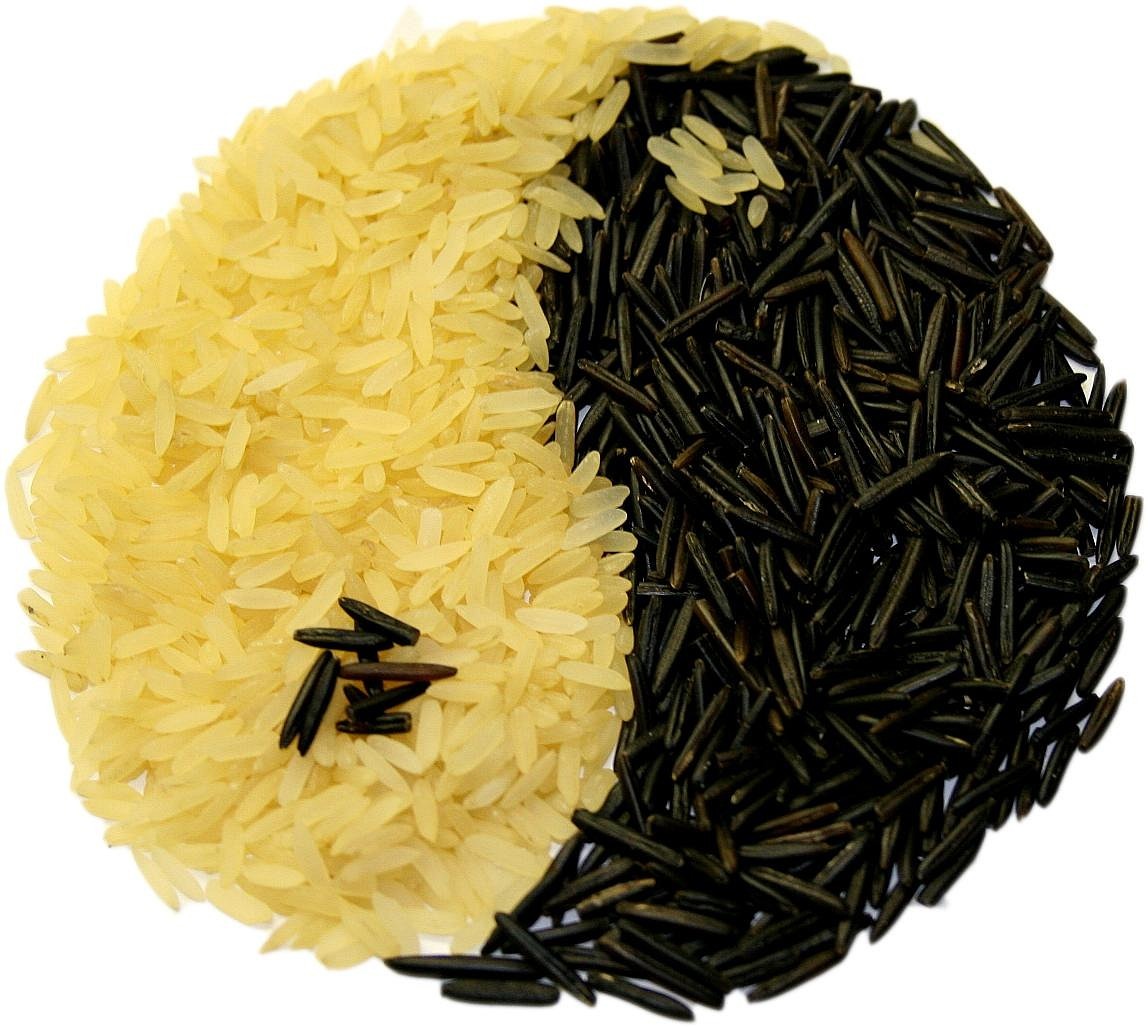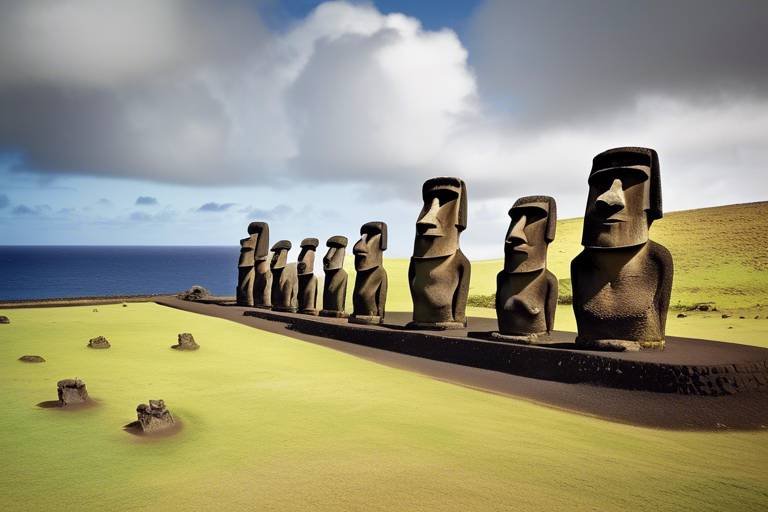The Mystery of the Ancient Chinese Philosophy of Yin and Yang
The ancient Chinese philosophy of Yin and Yang holds a mysterious allure, captivating the minds of those who seek to understand the intricate balance of the universe. Originating from centuries-old wisdom, this concept delves deep into the essence of existence, shedding light on the interconnectedness of all things.
Yin and Yang, like the ebb and flow of tides, symbolize the eternal dance of opposing yet harmonious forces. In the tapestry of life, Yin embodies the shadowy aspects - the cool, the quiet, the receptive. On the other hand, Yang radiates with brightness, energy, and assertiveness, complementing the Yin in a cosmic embrace.
As we delve into the roots of this philosophy, we uncover a rich tapestry of cultural significance and historical context. The ancient Chinese sages wove the threads of Yin and Yang into the fabric of their beliefs, recognizing the duality as a fundamental principle governing the universe.
Traditional Chinese medicine, a treasure trove of ancient wisdom, applies the principles of Yin and Yang in diagnosing and treating illnesses. The balance of these energies within the body is believed to be crucial for maintaining health and well-being, aligning with the natural rhythms of the universe.
Nature itself mirrors the interplay of Yin and Yang, manifesting in the cycles of day and night, the changing seasons, and the harmonious balance of elements. Just as the sun rises to meet the moon, these forces coexist in a delicate equilibrium, shaping the world around us.
Striving for balance and harmony between Yin and Yang is not just a philosophical pursuit but a practical endeavor for holistic living. Embracing both the stillness of Yin and the dynamism of Yang, we seek to find equilibrium in our daily lives, fostering a sense of inner peace and vitality.
In the modern world, the wisdom of Yin and Yang continues to resonate, offering insights into the complexities of human nature and the interconnectedness of our global community. As we navigate the challenges of contemporary society, the ancient philosophy of Yin and Yang serves as a guiding light, reminding us of the eternal dance of opposites in a world seeking harmony.

Origins of Yin and Yang
The origins of the concept of Yin and Yang can be traced back to ancient Chinese philosophy, where it holds a central place in understanding the natural world and the balance of opposing forces. Dating back thousands of years, the idea of Yin and Yang emerged from observations of the world around them by ancient Chinese scholars and thinkers. It reflects the dualistic nature of existence and the interconnectedness of all things in the universe.

Interpreting Yin and Yang
Exploring the profound concept of Yin and Yang in Chinese philosophy reveals a fascinating duality that influences various aspects of life, including health, nature, and balance. This ancient concept, deeply rooted in Chinese culture, continues to captivate minds with its intricate symbolism and profound implications.
Understanding the historical roots and cultural significance of the Yin and Yang concept in ancient Chinese thought unveils a rich tapestry of beliefs and traditions. Dating back thousands of years, this philosophy has shaped the worldview of generations, offering insights into the interconnectedness of all things.
Exploring the dualistic nature of Yin and Yang reveals a delicate dance of opposing yet complementary forces in the universe. The concept of Yin embodies qualities such as darkness, passivity, and femininity, while Yang represents light, activity, and masculinity. Together, they form a harmonious balance that underpins the very fabric of existence.
Examining the attributes associated with Yin energy unveils a realm of subtlety and receptivity. It embodies the essence of darkness, symbolizing introspection, rest, and the nurturing aspects of life. In the cosmic interplay of Yin and Yang, it is the receptive force that allows for growth and transformation.
Exploring the qualities linked to Yang energy reveals a realm of dynamism and vigor. It embodies the essence of light, symbolizing action, creativity, and the assertive aspects of life. In the cosmic interplay of Yin and Yang, it is the active force that propels change and progress.
Discovering how the principles of Yin and Yang are applied in diagnosing and treating illnesses in traditional Chinese medicine unveils a holistic approach to health and well-being. By harmonizing the opposing energies within the body, practitioners seek to restore balance and promote healing.
Investigating how Yin and Yang are reflected in the natural world reveals a profound interconnectedness between all living beings and phenomena. From the ebb and flow of day and night to the cyclical rhythms of the seasons, the balance of Yin and Yang is evident in every aspect of nature.
Discussing the importance of maintaining equilibrium between Yin and Yang emphasizes the need for balance and harmony in all aspects of life. Just as day turns into night and the seasons change in a continuous cycle, finding harmony between opposing forces is essential for overall well-being and peace of mind.
Reflecting on the contemporary interpretations and continued relevance of the Yin and Yang philosophy in today's society sheds light on its enduring wisdom. As we navigate the complexities of the modern world, the timeless principles of balance and harmony offer a guiding light towards a more holistic and interconnected existence.

Yin Characteristics
The concept of Yin in Chinese philosophy embodies qualities that are often associated with darkness, stillness, and receptivity. It represents the passive, intuitive, and feminine aspects of existence. Yin energy is like the calm surface of a lake, reflecting the moonlight and embracing the quietude of the night. It is the nurturing force that allows for introspection, rest, and restoration.
In traditional Chinese medicine, Yin is linked to the cooling, moisturizing, and nourishing aspects of the body. It is essential for maintaining balance and harmony within the body's systems. When Yin is deficient, it can lead to symptoms such as dryness, insomnia, and hormonal imbalances. Understanding and balancing Yin energy is crucial for overall health and well-being.
Yin is also symbolized by the winter season, a time of introspection, reflection, and conservation. Just as nature enters a period of dormancy during winter, Yin energy encourages us to turn inward, conserve our resources, and prepare for the growth and activity associated with Yang energy in the spring.
Moreover, Yin is not a static concept but a dynamic force that flows and transitions in relation to Yang. The interplay between Yin and Yang is a dance of opposites, each containing the seed of the other within itself. Just as night gives way to day and stillness transforms into movement, the balance between Yin and Yang is essential for the cyclical nature of life.

Yang Characteristics
Yang, the dynamic counterpart to Yin, embodies qualities that are associated with light, activity, and masculinity. In the concept of Yin and Yang, Yang represents the bright side of the hill, the sunlit peak that radiates warmth and energy. It symbolizes movement, growth, and the active forces in the universe. Just as the sun rises to bring light and vitality to the world, Yang energy is characterized by vigor, assertiveness, and the drive to create change.
Yang characteristics are often linked to qualities such as strength, power, and resilience. In the natural world, Yang is evident in phenomena like daytime, summer, and the expansive energy of fire. It is the force that propels us forward, motivates us to take action, and pushes us to achieve our goals. Yang energy is about being proactive, decisive, and embracing challenges with courage and determination.
Within the human body, Yang is associated with functions that generate heat, promote circulation, and support activity. It governs processes such as metabolism, digestion, and muscular strength. When the Yang energy is in balance, it fosters vitality, enthusiasm, and a sense of purpose. However, an excess or deficiency of Yang can lead to issues like hyperactivity, aggression, or lack of motivation.
Moreover, the interplay between Yin and Yang is essential for maintaining harmony and equilibrium in both the natural world and the human body. While Yin provides the foundation and receptivity, Yang brings the energy and drive to manifest intentions and achieve balance. Understanding and honoring the Yang characteristics allow us to harness our inner strength, embrace change, and navigate the dynamic flow of life with resilience and vitality.

Applications in Traditional Chinese Medicine
The concept of Yin and Yang plays a crucial role in Traditional Chinese Medicine (TCM), guiding practitioners in understanding the balance within the body and the universe. In TCM, health is viewed as a state of harmony between these two opposing yet interconnected forces. When there is an imbalance of Yin and Yang, it is believed to result in illness and disease.
Practitioners of TCM use the principles of Yin and Yang to diagnose and treat various health conditions. By assessing the patient's symptoms, pulse, and tongue, they aim to identify the underlying imbalance of Yin and Yang in the body. For example, a condition characterized by excess heat may be seen as an imbalance of Yang energy, while symptoms of coldness or stagnation could indicate a deficiency of Yang or excess of Yin.
Herbal remedies and acupuncture are commonly used in TCM to restore the balance of Yin and Yang in the body. Certain herbs are classified as Yin or Yang tonics, depending on their properties and effects on the body. Acupuncture, on the other hand, is believed to stimulate the flow of Qi (vital energy) along meridians to rebalance Yin and Yang and promote healing.
Furthermore, lifestyle recommendations such as dietary changes, exercise, and stress management are often prescribed to support the harmonization of Yin and Yang. By incorporating these holistic approaches, TCM aims to address not only the symptoms but also the underlying imbalances that contribute to illness.

Symbolism in Nature
The concept of Yin and Yang extends beyond human interactions and societal dynamics to encompass the very essence of nature itself. In the natural world, the interplay of Yin and Yang can be observed in various phenomena, each reflecting the delicate balance and harmony that underlies all existence.
One of the most evident manifestations of Yin and Yang in nature is the cycle of day and night. The transition from light to darkness and back again symbolizes the eternal dance of opposing forces, where one cannot exist without the other. Similarly, the changing of seasons embodies the cyclical nature of Yin and Yang, with winter representing Yin's cold and stillness, while summer embodies Yang's warmth and activity.
Moreover, the balance of elements in nature, such as the harmony between fire and water, earth and sky, further illustrates the interconnectedness of Yin and Yang. Just as in traditional Chinese medicine where health is believed to stem from the equilibrium of these energies, nature thrives when the dual forces are in harmonious alignment.

Balance and Harmony
Balance and Harmony are at the core of the ancient Chinese philosophy of Yin and Yang. This concept emphasizes the importance of equilibrium between opposing forces to achieve overall well-being and harmony in life. Just like the balance between day and night, Yin and Yang must coexist in harmony to maintain a sense of balance in the universe.
In traditional Chinese medicine, the balance between Yin and Yang is crucial for maintaining health and preventing illnesses. When Yin and Yang are out of balance, it can lead to various health issues. Practitioners of traditional Chinese medicine use this concept to diagnose and treat patients, aiming to restore the equilibrium between these two forces.
Think of Yin and Yang as complementary forces that cannot exist without each other. They are interdependent and interconnected, constantly influencing and balancing each other out. This dynamic interplay creates a harmonious relationship that is essential for the natural order of the universe.
Just as in nature where the changing seasons demonstrate the cyclical nature of Yin and Yang, our lives also experience fluctuations between these two energies. Achieving balance and harmony between Yin and Yang is a continuous process that requires mindfulness, self-awareness, and an understanding of the interconnectedness of all things.
By embracing the principles of Yin and Yang in our daily lives, we can strive to achieve a sense of harmony and balance within ourselves and with the world around us. It is a reminder that true harmony comes from embracing the duality of existence and finding the beauty in the delicate dance between opposing forces.

Modern Interpretations and Relevance
Exploring the profound concept of Yin and Yang in Chinese philosophy and its influence on various aspects of life, including health, nature, and balance.
Understanding the historical roots and cultural significance of the Yin and Yang concept in ancient Chinese thought.
Exploring the dualistic nature of Yin and Yang and how they represent opposing yet complementary forces in the universe.
Examining the attributes associated with Yin energy, such as darkness, passivity, and femininity.
Exploring the qualities linked to Yang energy, including light, activity, and masculinity.
Discovering how the principles of Yin and Yang are applied in diagnosing and treating illnesses in traditional Chinese medicine.
Investigating how Yin and Yang are reflected in the natural world through phenomena like day and night, seasons, and the balance of elements.
Discussing the importance of maintaining equilibrium between Yin and Yang for overall well-being and harmony.
Reflecting on the contemporary interpretations and continued relevance of the Yin and Yang philosophy in today's society.
Frequently Asked Questions
- What is the significance of Yin and Yang in Chinese philosophy?
In Chinese philosophy, Yin and Yang represent the dualistic forces that are interconnected and interdependent in the universe. They symbolize the balance between opposing yet complementary energies, such as darkness and light, femininity and masculinity.
- How are Yin and Yang applied in Traditional Chinese Medicine?
Yin and Yang are fundamental concepts in Traditional Chinese Medicine, used to diagnose and treat illnesses by identifying imbalances in the body's energy. Practitioners aim to restore harmony between Yin and Yang to promote health and well-being.
- What is the importance of maintaining balance between Yin and Yang?
Maintaining equilibrium between Yin and Yang is crucial for overall harmony and well-being. When these energies are in balance, it is believed to support good health, emotional stability, and a harmonious relationship with the surrounding environment.



















